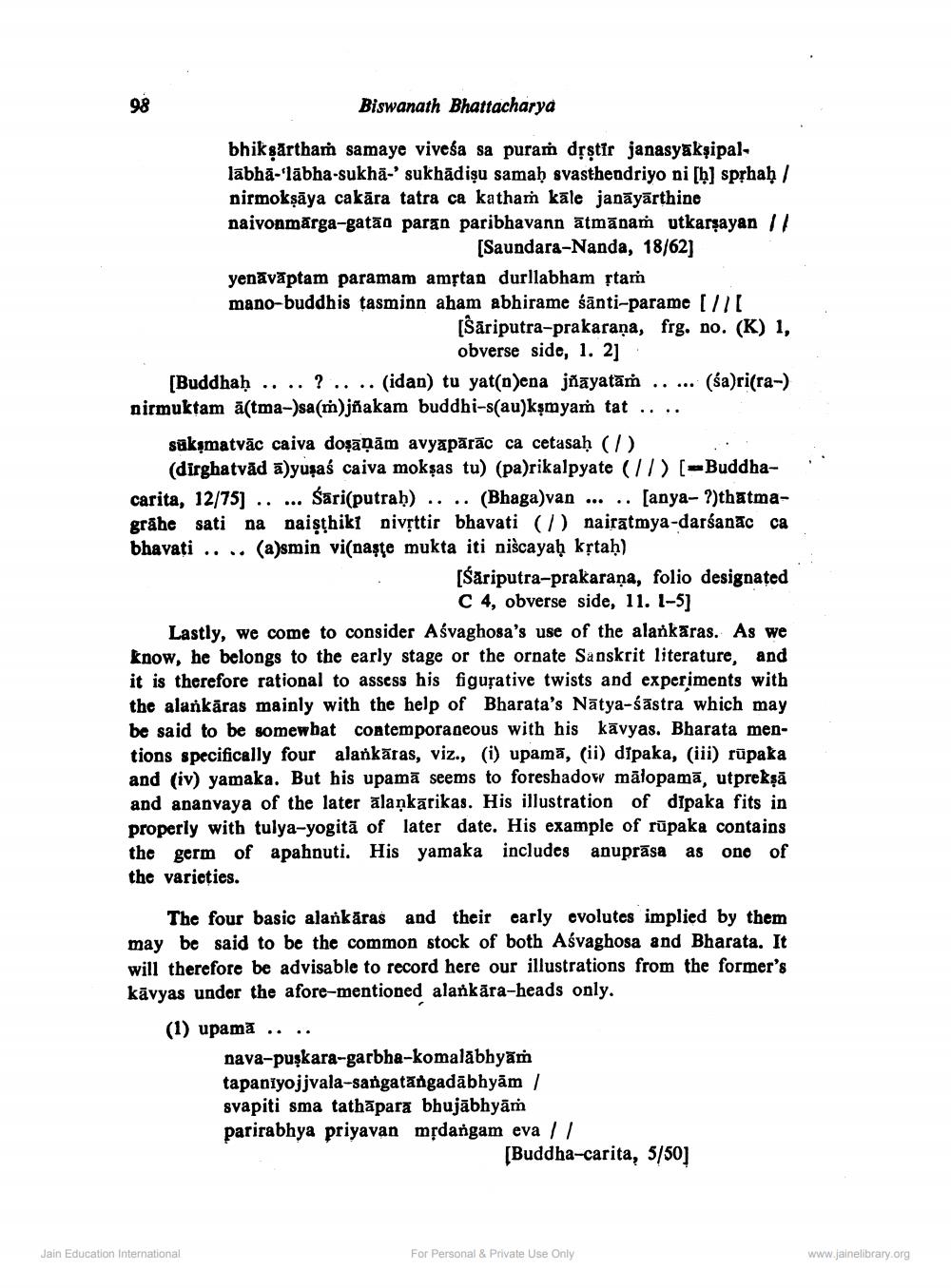________________
Biswanath Bhattacharya
'
bhikṣārtham samaye viveśa sa puram dņştîr janasyukşipallābhā-'lābha-sukhā-' sukhādişu samaḥ svasthendriyo ni [h] sprhah / nirmokṣāya cakāra tatra ca katham kāle janāyārthine naivonmārga-gatāo paran paribhavann ātmānam utkarşayan //
[Saundara-Nanda, 18/62] yenāvāptam paramam amptan durllabham ştam mano-buddhis tasminn aham abhirame śānti-parame (1)
[Šāriputra-prakaraṇa, frg. no. (K) 1,
obverse side, 1. 2]. [Buddhaḥ .... ? .... (idan) tu yat(o)ena jñāyatām ..... (sa)ri(ra-) nirmuktam āstma-)sa(m)jñakam buddhi-s(au)kşmyam tat ....
sakamatvāc caiva doşāņām avyāpārāc ca cetasaḥ (1)
(dirghatvād ā)yuşaś caiva mokşas tu) (pa)rikalpyate (17) (-Buddha- carita, 12/75] .. ... Śāri(putrah) .... (Bhaga)van ... .. [anya-?)thatmagrābe sati na naişthiki nivșttir bhavati (1) nairatmya-darśanāc ca bhavati .... (a)smin vi(naşte mukta iti nišcayaḥ krtaḥ)
[Śäriputra-prakaraṇa, folio designated
C 4, obverse side, 11. 1-5] Lastly, we come to consider Asvaghosa's use of the alankaras. As we know, he belongs to the early stage or the ornate Sanskrit literature, and it is therefore rational to assess his figurative twists and experiments with the alankāras mainly with the help of Bharata's Nātya-śāstra which may be said to be somewhat contemporaneous with his kāvyas. Bharata mentions specifically four alankāras, viz., (i) upamā, (ii) dipaka, (iii) rūpaka and (iv) yamaka. But his upamā seems to foreshadow mālopamā, utpreksā and ananvaya of the later alaņkārikas. His illustration of dipaka fits in properly with tulya-yogitā of later date. His example of rūpaka contains the germ of apahnuti. His yamaka includes anuprāsa as one of the varieties.
The four basic alarkāras and their early evolutes implied by them may be said to be the common stock of both Aśvaghosa and Bharata. It will therefore be advisable to record here our illustrations from the former's kāvyas under the afore-mentioned alankāra-heads only. (1) upamā ....
nava-puskara-garbha-komalābhyām tapaniyojjvala-sangatăngadābhyām svapiti sma tathāpara bhujābhyām parirabhya priyavan mțdangam eva //
[Buddha-carita, 5/50]
Jain Education International
For Personal & Private Use Only
www.jainelibrary.org




